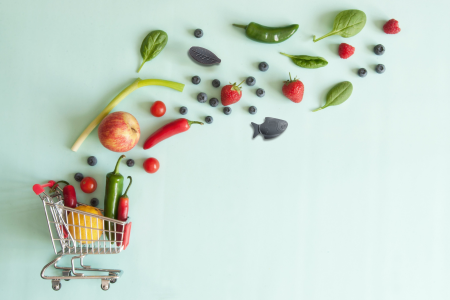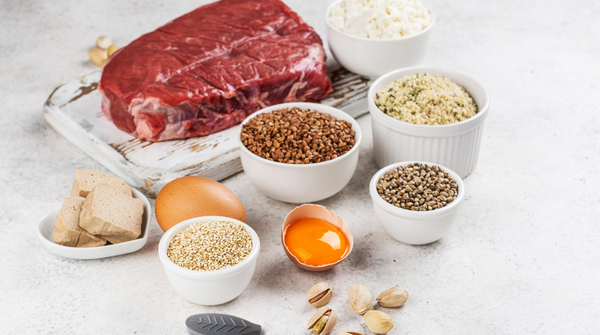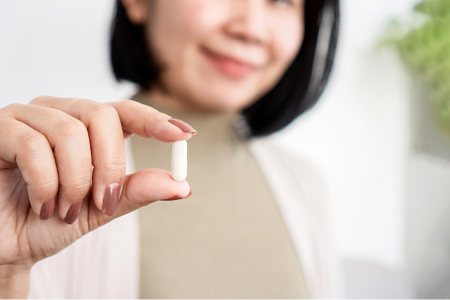Best and Worst Foods to Buy if You Are Iron Deficient
Grocery shopping may seem like a simple task to most, but when you have your iron levels on your mind, it may require a little more planning. The good news is that there are plenty of foods that are packed with iron that can appeal to even the pickiest of eaters. In this article, we review which iron-packed foods you should add to your grocery list and which items you should avoid.

Grocery shopping may seem like a simple task to most, but when you have your iron levels on your mind, it may require a little more planning. The good news is that there are plenty of foods that are packed with iron that can appeal to even the pickiest of eaters. In this article, we review which iron-packed foods you should add to your grocery list and which items you should avoid.
Load Up on Your Proteins
Both animal and plant-based proteins offer a great source of iron. However, the kind of iron found in plant-based differs from animal proteins. Animal protein offers heme iron, whereas plant-based proteins offer non-heme iron. It is important to keep this in mind when grocery shopping as the iron you receive from animal protein (heme iron) is more easily absorbed by the body. Therefore, you might be able to reach your iron goals quicker. Nonetheless, if you prefer to elevate your iron levels just via plant-based foods, not to worry!
Any protein will do the job:
-
Lean red meat (beef, lamb, venison)
-
Poultry (chicken, turkey - dark meat preferably)
-
Pork
-
Liver and organ meat
-
Seafood (clams, oysters, mussels, tuna and salmon)
-
Legumes (chickpeas, lentils, beans)
-
Tofu and tempeh
Not sure how these compare to each other? Here’s a handy chart (compiled via WebMD, Healthline, U.S. Department of Agriculture, and Health.com ):
Don’t Forget Your Fruits & Veggies
When it comes to high iron foods, it's just as important to pay attention to what you pair with it. For maximum iron absorption, you want to consume high iron foods with something rich in vitamin C, and this is where your fruits and vegetables come in.
You’ll want to look for fruits and veggies that are acidic as they are high in vitamin C, which is what helps you absorb iron efficiently. So, add these to your next grocery list:
-
Dark leafy greens (cooked spinach, kale, collard greens)
-
Dried fruits (apricots, raisins, figs, prunes)
-
Citrus fruits (Lemon, Oranges, limes, and grapefruits)
-
Bell peppers (Especially red, yellow, and orange varieties_
-
Tomatoes (Fresh or in sauces)
-
Strawberries
However, it is important to note that you shouldn’t overdo it on fruits and veggies. While healthy, too much fibre can reduce iron absorption. In general, it is recommended for most adults to consume 2.5 cups of fruits or vegetables per day, according to studies (source: MD Anderson Cancer Center).
Pick Your Carbs
Plenty of starchy carbohydrates are natural sources of iron or are fortified with iron, making it easier to meet your iron needs. But, when choosing a starchy carbohydrate, be mindful of the level of fibre. As mentioned above, fibre can block iron absorption. Choose any of the following carbohydrates to maximize your iron absorption:
-
Quinoa
-
Fortified cereals and oatmeal
-
Whole grains (brown rice, barley, whole wheat bread)
-
Potatoes (with skins)
Don’t Forget the Extras
A little extra crunch or a little extra flavour can have great iron benefits. Nuts and seeds are great sources of iron and have a widespread application from sauces to granola to a healthy snack. Make sure to include these in your high-iron grocery list for a boost of iron:
-
Roasted or soaked Nuts (cashews, almonds, pistachios)
-
Seeds (pumpkin seeds, sunflower seeds, sesame seeds)
-
Molasses (blackstrap)
-
Tahini
-
Lucky Iron Fish/Leaf
Plenty of starchy carbohydrates are natural sources of iron or are fortified with iron, making it easier to meet your iron needs. But, when choosing a starchy carbohydrate, be mindful of the level of fibre. As mentioned above, fibre can block iron absorption. Choose any of the following carbohydrates to maximize your iron absorption:
-
Quinoa
-
Fortified cereals and oatmeal
-
Whole grains (brown rice, barley, whole wheat bread)
-
Potatoes (with skins)
Foods to Avoid if You Have Low Iron
Although we briefly touched on the subject, there are certain foods that can stop or lower how much iron is available to the body. While most are healthy to consume, if you have low iron, you may need to consume it separately (1-2hrs apart) from your high-iron meals or choose alternate methods of preparation, such as fermentation, blending, roasting, soaking, etc., when consuming these foods:
-
Tea, coffee, and alcohol
-
Dairy and calcium-rich foods (milk, cheese, yogurt)
-
High-Fiber Foods (Whole wheat, bran, oats, brown rice)
-
Soy-based products (unless fermented)
-
Eggs
-
Beet greens and rhubarb
-
Carbonated beverages
High Iron Foods for Picky Eaters
If you’re not the most experimental eater or you just want to make your life easier while elevating your iron levels, you can rely on the Lucky Iron Fish or Leaf. This clinically-proven product releases 6-8g of tasteless non-heme iron when paired with a citrus source and boiled for 10 minutes. You can easily add it to any soup or broth preparation, turn it into ice cubes, or use as drinking water for an easy boost of tasteless iron. See our recipes here for more inspo!
—---------------------------------------------------------------------------------------------------------------------------------
The bottom line is, that no matter how you choose to get your iron, it is important to make an active effort to bring your iron levels back to normal. By ensuring you add protein and foods with citrus to your grocery list or by fortifying your meals with Lucky Iron Fish or Leaf, you can make a significant change in your iron levels.
Disclaimer: Make sure to consult with your healthcare professional prior to making any changes.




